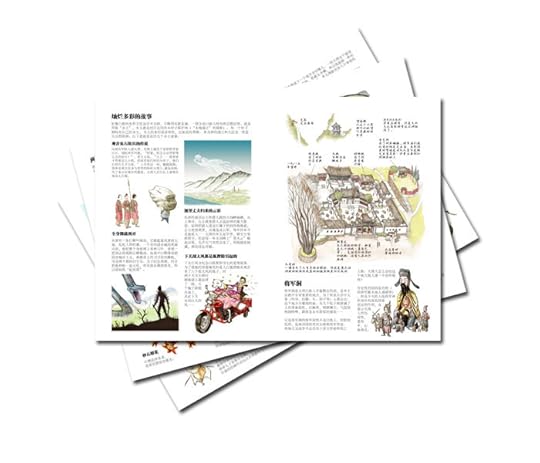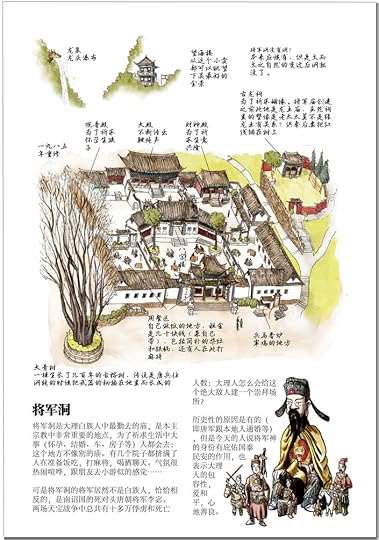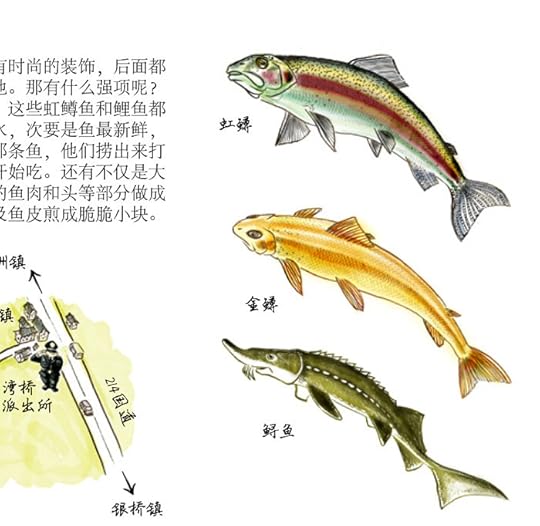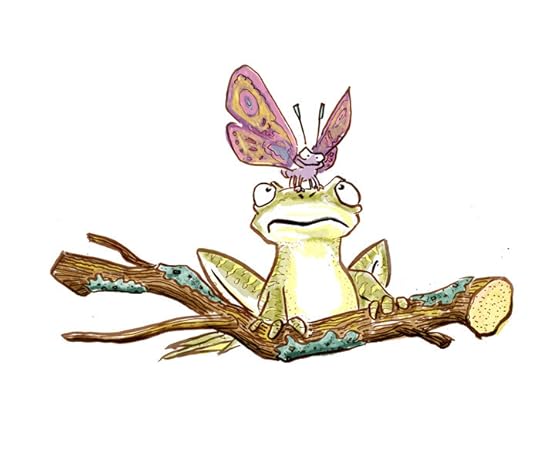Jason Pym's Blog, page 8
October 9, 2014
Banyan Tree Hotel Shangri-La to Lijiang tourist map
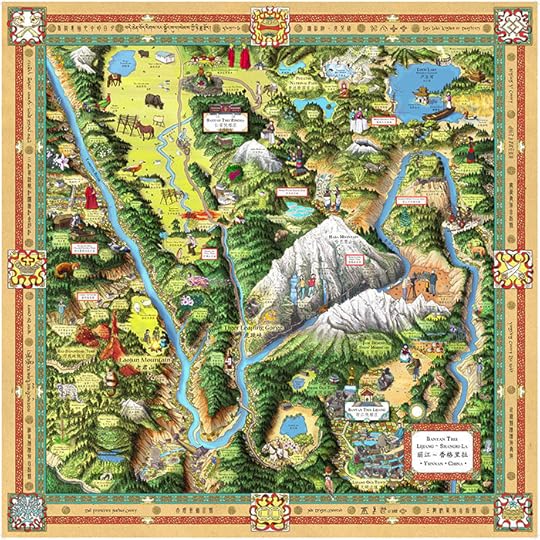
This map is given to guests at both the Shangri-La and Lijiang Banyan Tree hotels, it details sites of interest in the wider area. The border has the place names of the local area in the script of the local language – so Chinese, Tibetan and Nakhi, as well as Lisu and Yi.
Some close ups:
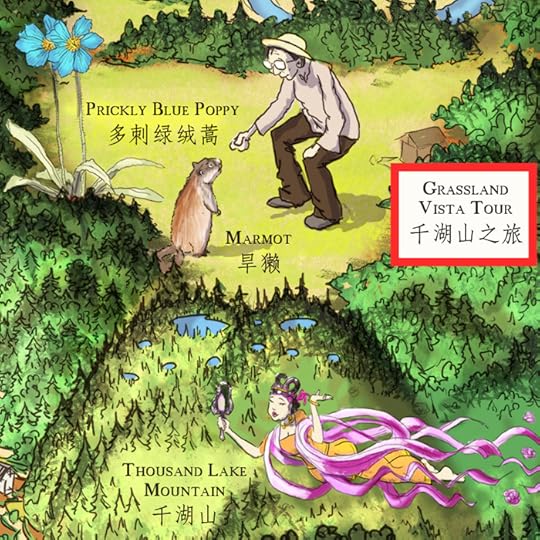
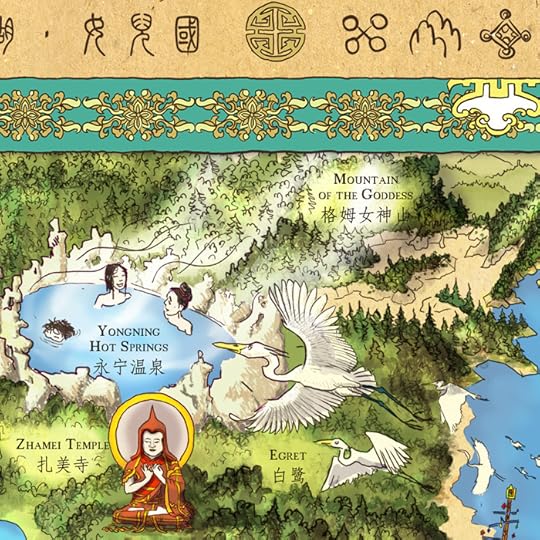
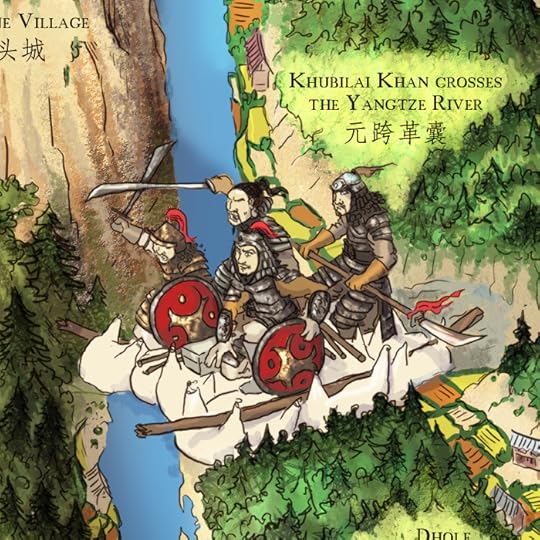
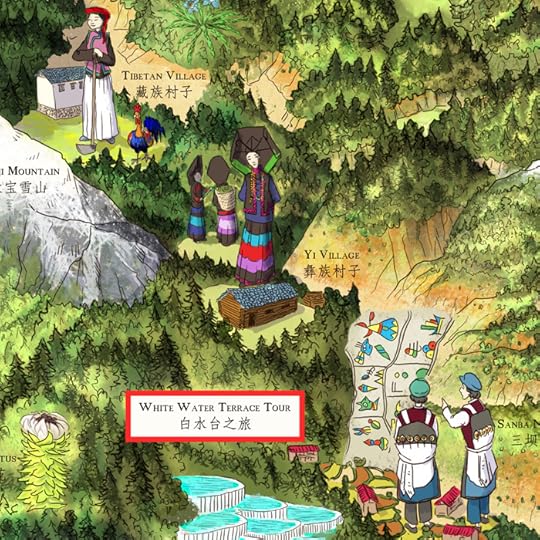
… and sketches…
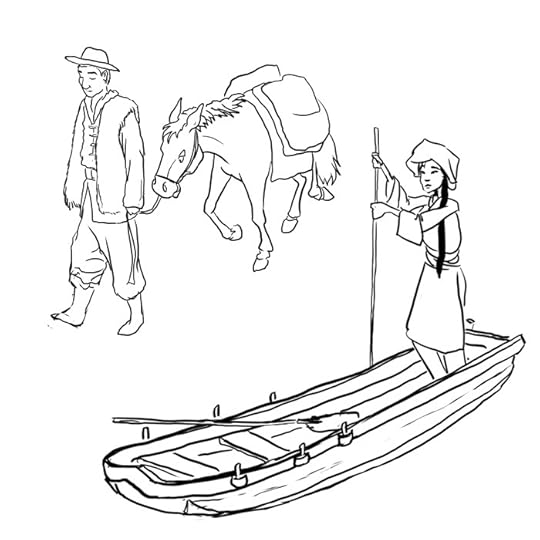
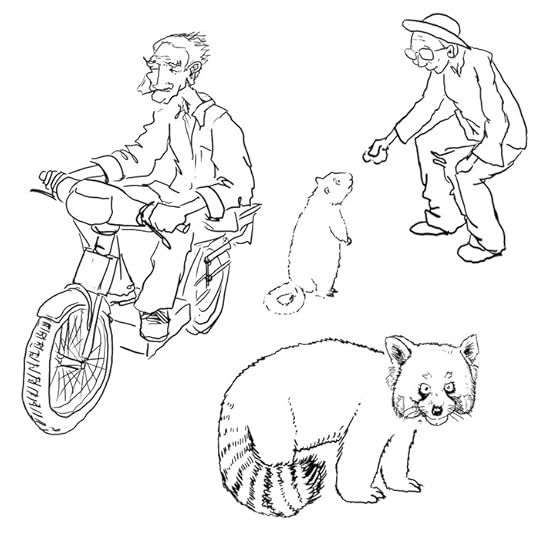
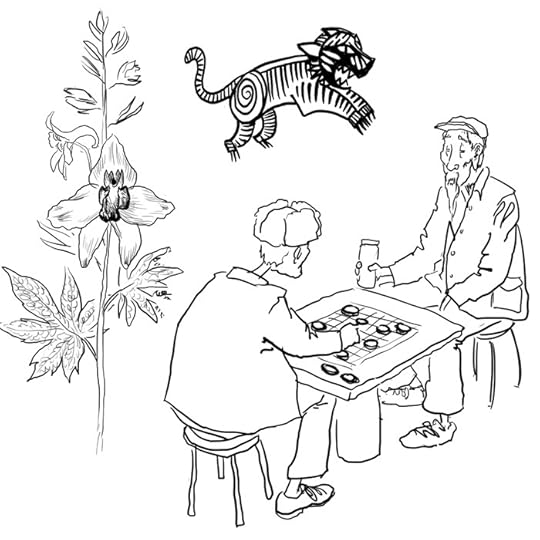
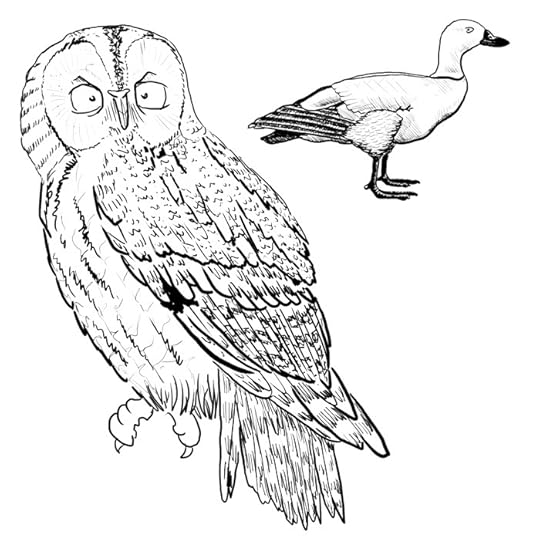
Hotel map for the Banyan Tree in Shangri-La
Here’s the map for Banyan Tree Ringha, in Shangri-La:
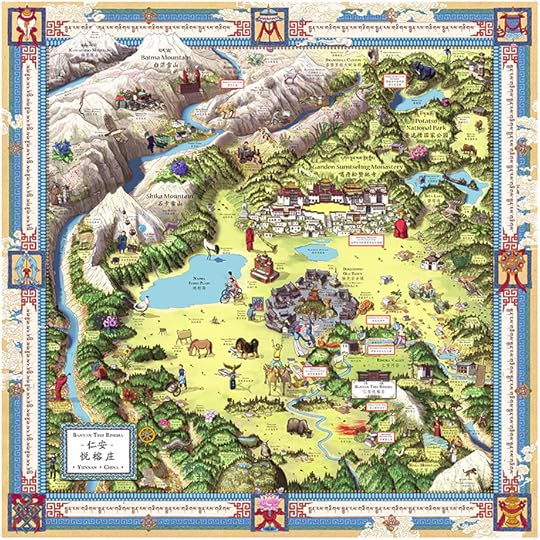
The border is in Tibetan script (the holy words “Om mani padme hum” repeated) with the ashtamangala, the eight auspicious symbols of Tibetan Buddhism.
Close ups:
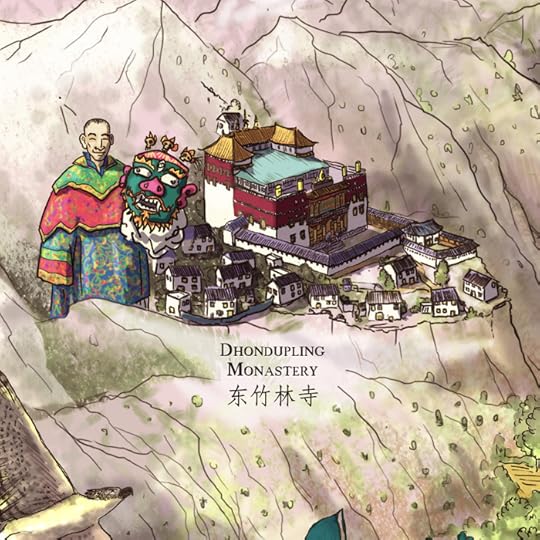
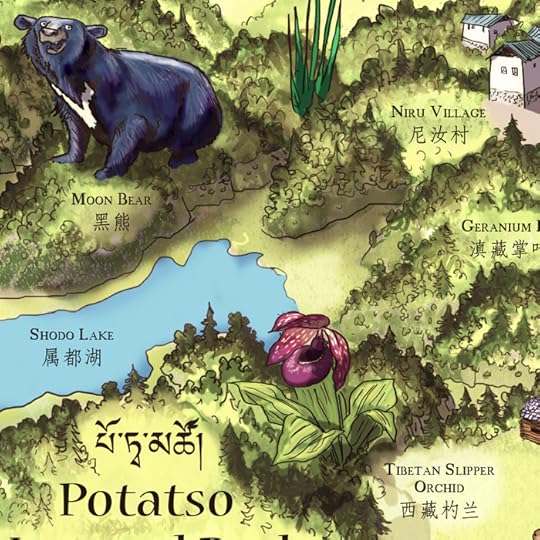
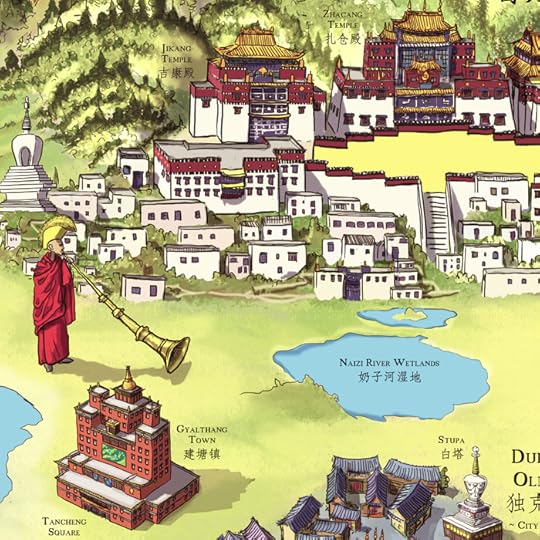
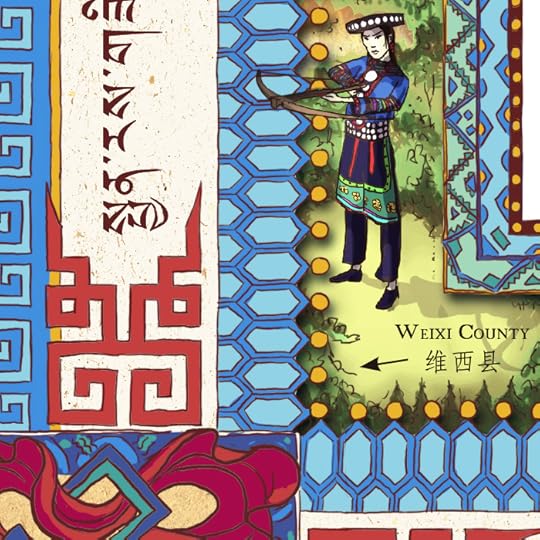
And some sketches:
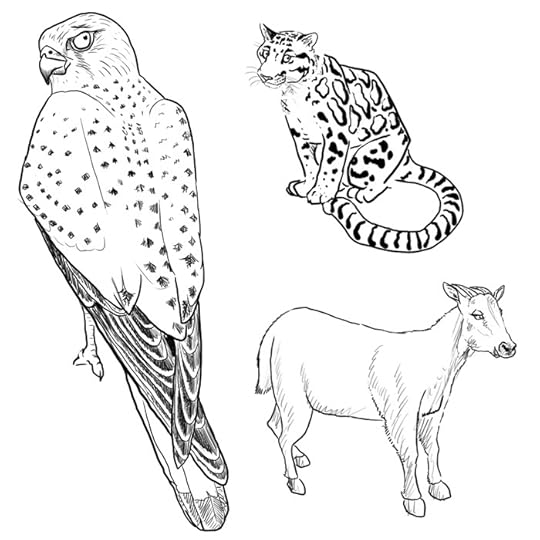
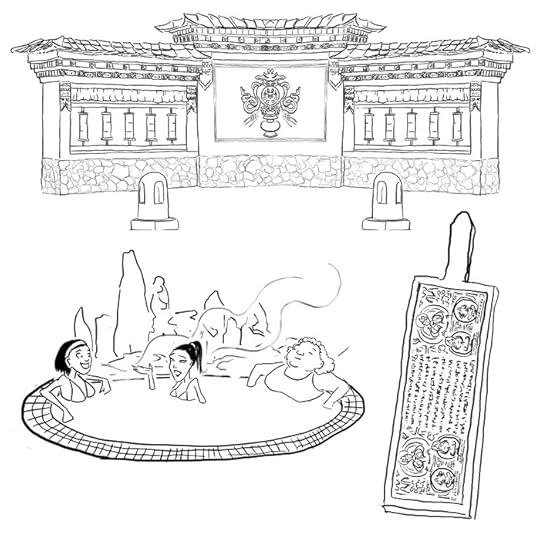
Tourist map for Banyan Tree Lijiang
Here is my map for the area surrounding the Banyan Tree hotel in Lijiang:
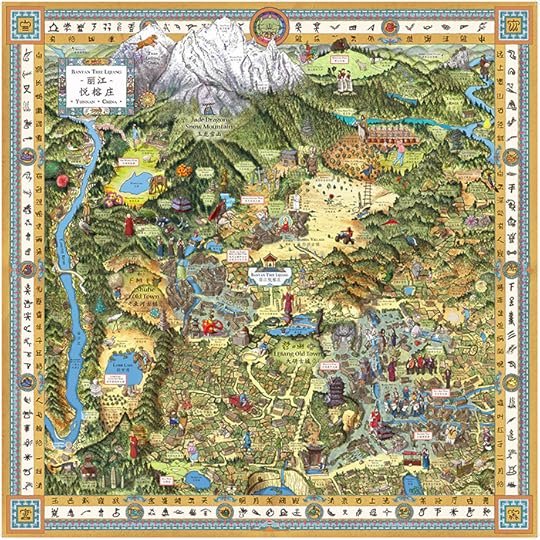
The border has the traditional holy animals of the local Nakhi people and a poem in their own ideographic script, also translated into Chinese.
Here are some close ups:
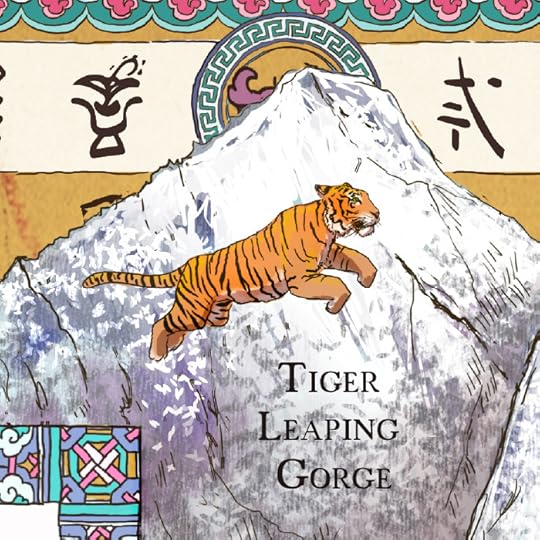
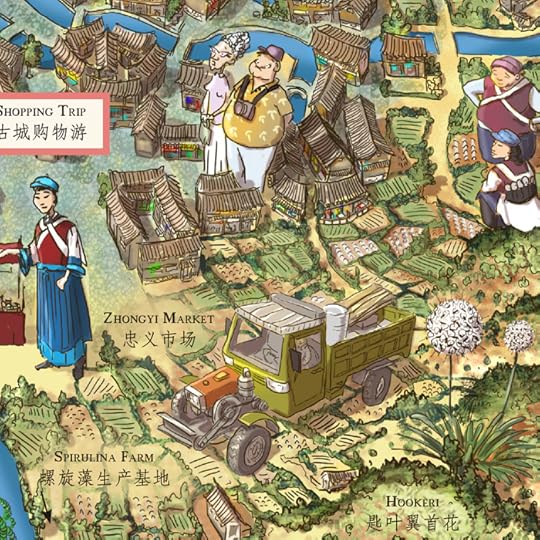
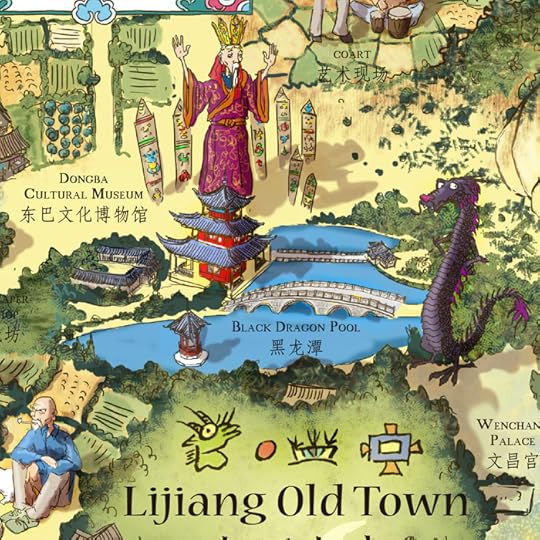
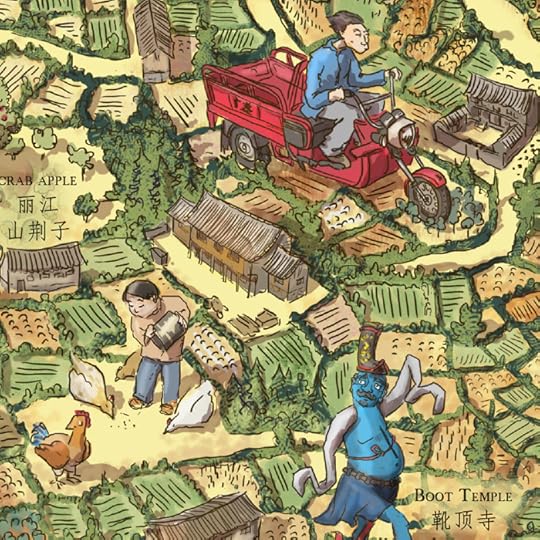
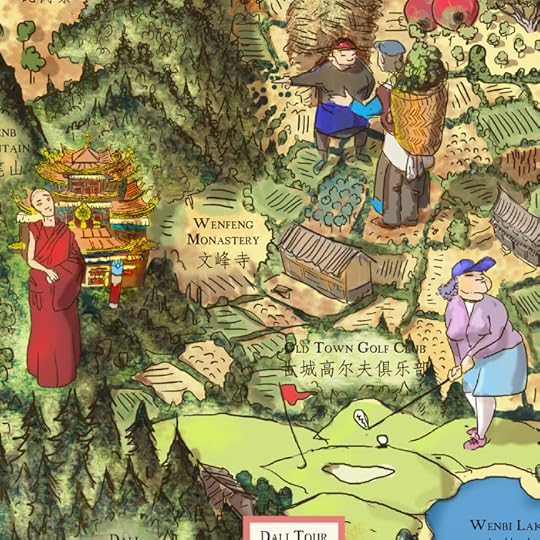
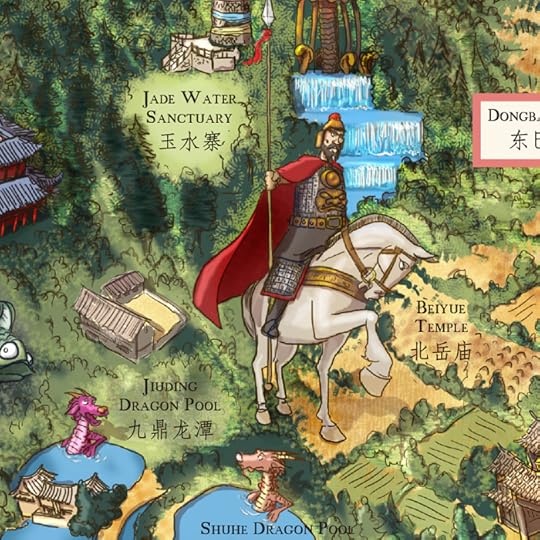
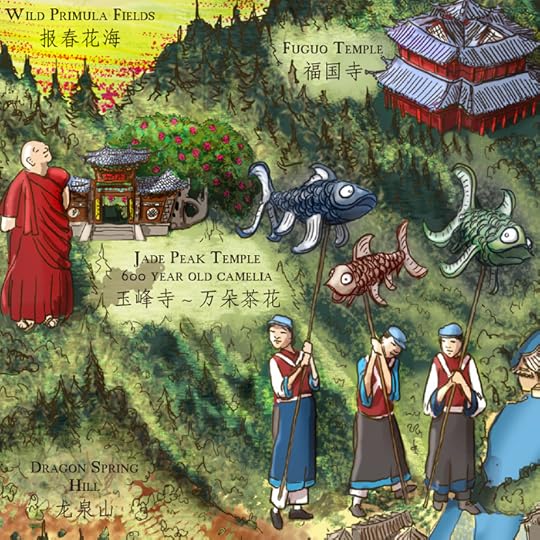
And some sketches…
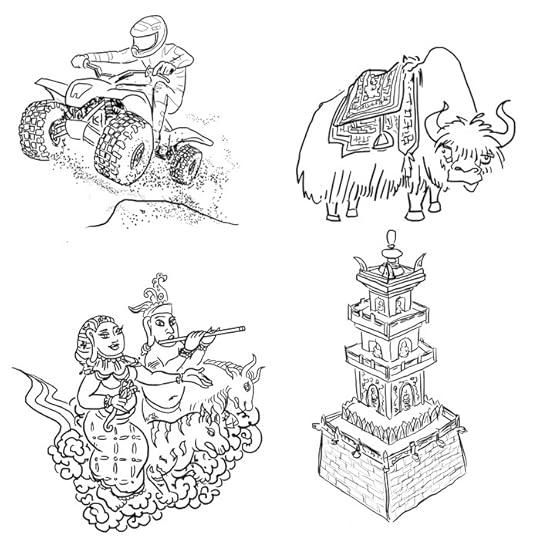
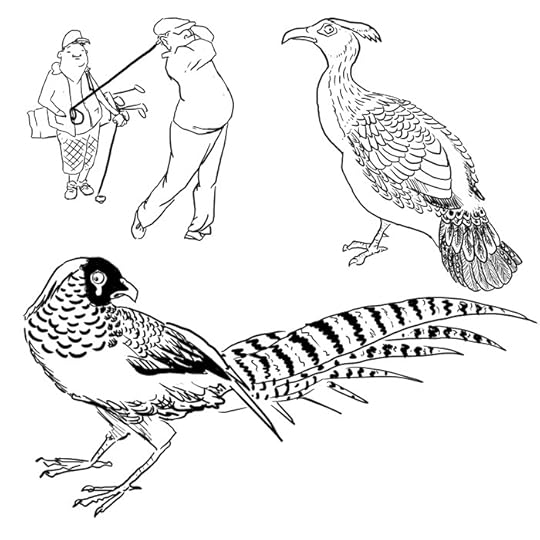
Banyan Tree hotel maps
For Banyan Tree I made three maps covering the local sites near their Lijiang and Shangri-La hotels…
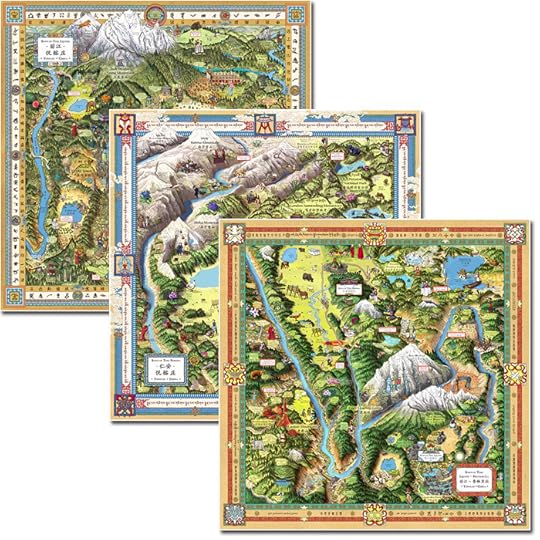
Each is 60cm square, and on the back is detailed Tour and Trek info…
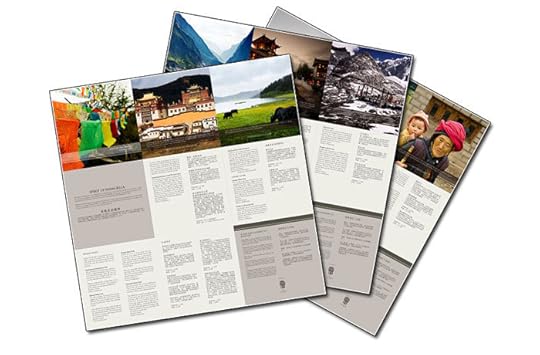
In the next few posts I’ll post detailed images of each…
October 7, 2014
Dragons of Victorian London
For Black Dragon’s Spiced Apple Jam, I’ve painted some Dickensian dragons…

Close ups:



Joe with the actual paintings:

And the actual label:


October 6, 2014
CCTV10 interview
CCTV9′s arts programme Shi Xing Tian Xia《诗行天下》interviewed me as part of their special on Dali…
June 24, 2014
JQ’s Tales of Enchantment [album cover]
JQ’s new album Tales of Enchantment is out now, and I’m very chuffed that I got to do the cover, here it is:

Here he is playing a track from it (Arda Chan)….
If you’re in China and can’t see the youtube video, you can hear the whole album of his first album Airports here.
Here’s the full cover:

And inside:

It’s a six panel digipak, so folds out like this:

Here’s a couple of the alternative covers that didn’t make it:



And here’s his first album (this cover’s by me too, very different though)….


And a bit more JQ, this is in Shanghai with Jasmine Chen singing…
February 2, 2014
Chinese name chops and how to use them
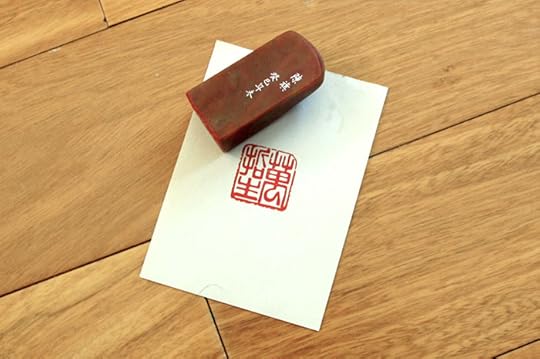
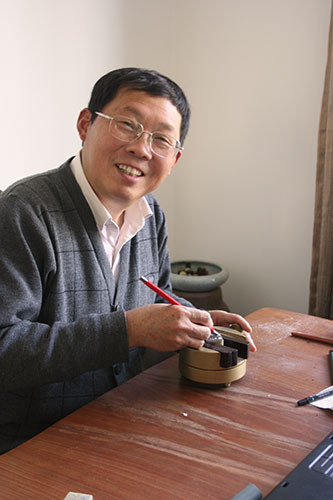 This is my neighbour Chen Qi. Since he was fifteen he has been carving soapstone stamps (“chops”) with peoples names on, which traditionally you put on paintings and calligraphy next to your signature. He very kindly gave me one of my own for Spring Festival, with my Chinese name in seal script.
This is my neighbour Chen Qi. Since he was fifteen he has been carving soapstone stamps (“chops”) with peoples names on, which traditionally you put on paintings and calligraphy next to your signature. He very kindly gave me one of my own for Spring Festival, with my Chinese name in seal script. There is an art to using a stamp properly, and I’ve definitely been doing it wrong. So Chen Qi’s son Chen Jiahe showed me how…
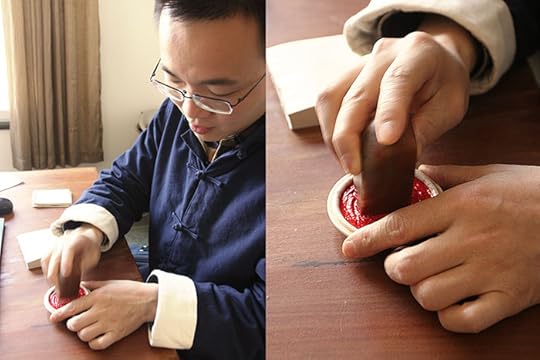
1. Tap the stamp into the ink. Don’t press the stamp directly down, this will force ink into the concave gaps, leaving a stamp that blots and is difficult to clean. Tap in different directions, checking that the ink has adhered evenly across the stamp.
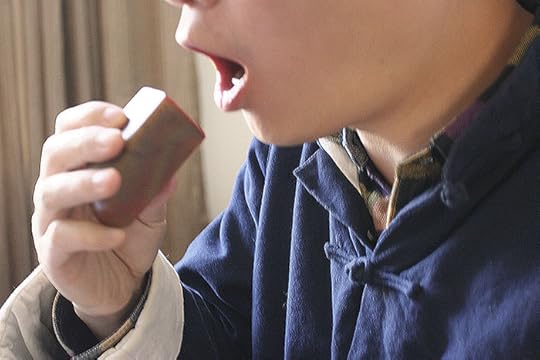
2. Breath on the stamp. The warmth of your breath will ensure the ink has a better flow, cold ink does not adhere as well.
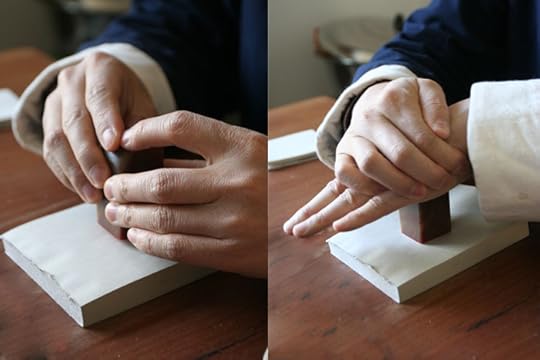
3. Make sure the stamp does not shift on the paper, press with circular motion. But before that, make sure you’re pressing on to a surface that gives (like this pad of paper, or the thick cloth used in calligraphy practice, a hard surface like a wooden table won’t work). Once the chop hits the paper you have to be really careful it stays in one place, otherwise it will blur. To ensure the ink spreads evenly, shift the pressure in a circular motion.
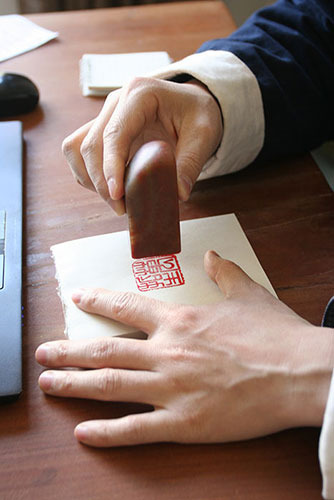
4. Lift straight up. Otherwise it will smudge, obviously.
Just a couple other things, the best ink is from the Xiling Academy of Traditional Arts in Hangzhou, which though over a century old now has a taobao shop (). This ink will last for longer than you need, it’s the same stuff you see on scroll hundreds of years old that still have a bright red chop on them. The ink from local art shops (let alone stationery shops) barely lasts a year before fading out in my experience.
Once you’ve used your chop, cleaning is just a matter of wiping it on paper. If you need to change colours (traditionally it’s red, but you can get a range of ink colours) better to clean it thoroughly with alcohol.
Chen Qi also makes these amazing miniatures (below), each one is smaller than your little finger, carved in soapstone.
If you would like your own stamp, Chen Qi now has his own taobao shop too… It’s called the Studio of Ten Thousand Stones (link). If you don’t read Chinese, but fancy one anyway, you can contact me (and get a Chinese name too, if you need)…
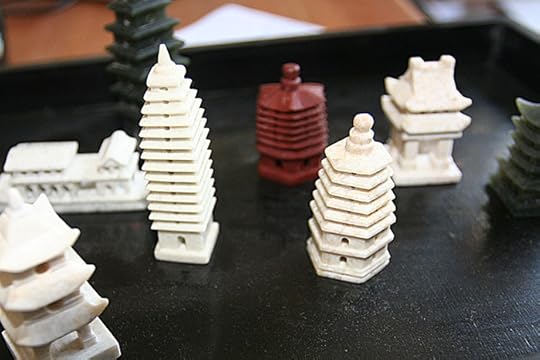
Notes on the Chinese:
My Chinese name 万哲生 Wàn Zhé shēng
Chen Qi 陈旗 Chén Qí
chop 印章 yìn zhāng
seal script 篆书 zhuàn shū (Chinese calligraphic style)
Chen Jiahe 陈嘉禾 Chén Jiā hé
(Jiahe is a presenter on Chinese Central Television’s economic’s channel)
Xiling Academy 西泠印社 Xī Líng yìn shè
Studio of Ten Thousand Stones 万石斋 Wàn Shí Zhāi
January 27, 2014
Pictures in Zazi magazine…
Another article about Dali, this one I wrote for Zazi (“Words Collection”) magazine…






And they’ve really outdone themselves in making this issue, it’s a lovely thing…


December 5, 2013
My favourite bits of Dali
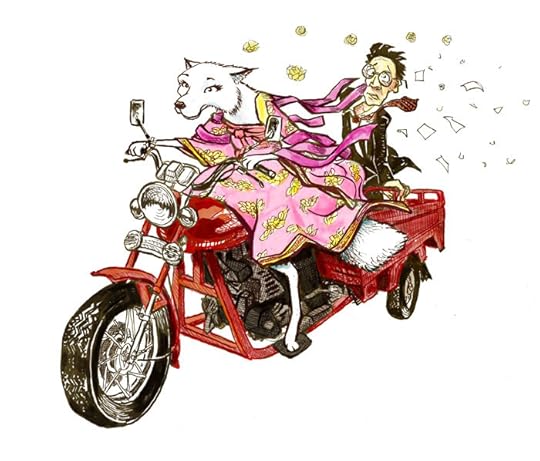
I have an article in the upcoming issue of Travelling Scope magazine (《旅游天地》杂志) on all my favourite things in Dali: Walking in the woods, Baizu myths, hot springs and of course the food :)….